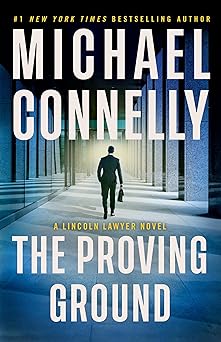
Kindle Unlimited is Amazon’s subscription-based reading service that gives members unlimited access to a massive digital library of books, magazines, comics, and audiobooks for a flat monthly fee. Designed to appeal to avid readers and audiobook enthusiasts alike, Kindle Unlimited has become one of the most popular options for those who prefer digital reading. This review takes a detailed look at what Kindle Unlimited offers, how it works, and whether it’s worth the cost.
What Kindle Unlimited Is and How It Works
Kindle Unlimited is not the same as Amazon Prime Reading, although the two are often confused. While Prime Reading gives Prime members access to a rotating catalog of a few thousand books, Kindle Unlimited offers access to over four million titles that include novels, nonfiction, children’s books, magazines, and audiobooks. The subscription currently costs a monthly fee and can be accessed on any device with the free Kindle app, including smartphones, tablets, and computers.
Once you subscribe, you can browse the Kindle Unlimited catalog and “borrow” up to 20 titles at a time. There are no due dates or late fees; you simply return one book to borrow another. This system makes it easy to maintain a constantly updated personal library of books tailored to your interests.
The Reading and Listening Experience
Kindle Unlimited integrates seamlessly with Amazon’s Kindle ecosystem. Readers can use the Kindle e-reader for a distraction-free experience or the Kindle app for convenient reading across devices. One of the standout features is the inclusion of thousands of titles that come with Audible narration. This means you can switch between reading and listening at any time without losing your place, an excellent feature for those who enjoy audiobooks during commutes or workouts.
The syncing feature between devices is also impressive. Your progress, highlights, and notes automatically update no matter which device you’re using. The reading interface is clean, customizable, and easy to adjust for brightness, font size, and background color, ensuring comfort for long reading sessions.
Book Selection and Variety
The strength of Kindle Unlimited lies in its variety. While you won’t find every major bestseller or newly released title, the service includes a vast number of popular genres: romance, mystery, fantasy, science fiction, history, and self-help, among others. Independent authors and small publishers also make up a large portion of the catalog, giving readers a chance to discover new and unique voices that might not appear on traditional bestseller lists.
For those who read frequently, the range of available titles can easily justify the monthly cost. You can find both well-known authors and hidden gems, and the search tools make it simple to explore specific genres or curated lists such as “Editor’s Picks” and “Most Read.”
Audiobooks and Magazines
Kindle Unlimited isn’t limited to written content. Thousands of books come with built-in Audible narration, which is included at no extra cost. This adds significant value, especially for those who already enjoy audiobooks. The magazine selection is smaller but offers a rotating variety of lifestyle, technology, and entertainment titles that can be read digitally just like books.
Pros of Kindle Unlimited
One of the biggest advantages of Kindle Unlimited is the sheer amount of content available for a single monthly price. For heavy readers, this can result in significant savings compared to buying individual eBooks. The ability to download books and read them offline is another benefit, especially for travelers or those without consistent internet access. The seamless integration with Amazon devices and apps ensures a user-friendly experience.
The inclusion of audiobooks enhances the service’s flexibility, allowing users to enjoy content however they prefer. It’s also ideal for readers who enjoy discovering new authors or exploring genres outside their usual interests, since there’s no financial risk to trying something different.
Cons of Kindle Unlimited
While Kindle Unlimited has plenty to offer, it’s not without drawbacks. The biggest limitation is that not all books available on Amazon are part of the program. Many bestselling and traditionally published titles must still be purchased separately. Readers who primarily read new releases or mainstream authors may find the selection lacking in that regard.
Another minor issue is that the 20-book borrowing limit can feel restrictive for some users who like to browse and hold large personal libraries. Additionally, if you’re not reading frequently, the monthly subscription might not justify its cost.
Who Should Consider Kindle Unlimited
Kindle Unlimited is best suited for frequent readers who enjoy exploring new books and genres. It’s particularly valuable for those who read several books a month, listen to audiobooks regularly, or enjoy the convenience of digital reading. It’s also great for families with children, as it includes a variety of educational and entertaining titles for younger readers.
However, for casual readers who only finish a few books each year, the subscription may not provide enough value compared to buying books individually.
Final Verdict
Kindle Unlimited is a versatile and convenient service that offers excellent value for dedicated readers. With its large catalog of books, audiobooks, and magazines, it delivers an experience that can easily replace traditional library borrowing or frequent eBook purchases. While it doesn’t include every title on Amazon, the diversity of available content and the ability to read and listen across devices make it a compelling option for those who love to read.
For those who devour books monthly and enjoy discovering new authors, Kindle Unlimited is a worthwhile investment that delivers endless reading possibilities at your fingertips.







